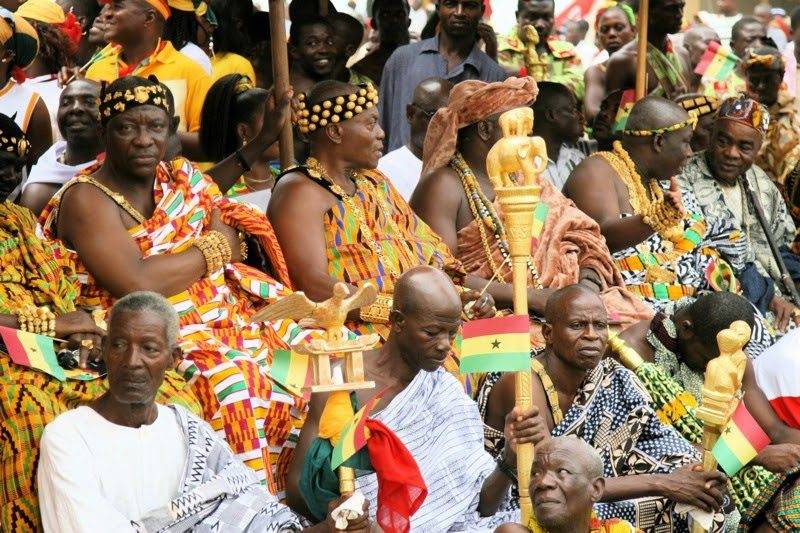The Asante, also known as the Ashanti, are a prominent ethnic group within the larger Akan community, which is one of the most significant cultural groups in modern-day Ghana and parts of Côte d'Ivoire. The Akan people are believed to have roots tracing back to ancient Egypt, from where they migrated westward—a common pattern among many African groups. Their ancestors, the Sona, are credited with playing a crucial role in the establishment of the Wagadu Empire, often referred to as the ancient Ghana Empire. This empire, one of Africa's most powerful and prosperous states at its peak, stands as a testament to the Sona's influence and organizational prowess.
Following the decline of the ancient Ghana Empire in the 12th century, some of its people migrated to present-day Ghana, integrating with local communities along the way. This migration gave rise to the Akan people, alongside other West African groups like the Malinke and possibly the Wolof. The Akan are thought to have Sinka roots, and the name "Asante" itself carries a deep historical significance. Derived from the Twi language, "Asante" means "because of war," originating from the words *osa* (war) and *nti* (because of). This name reflects the origins of the Asante Kingdom, which was founded to resist the dominance of the Denkyira Kingdom. The variant "Ashanti" emerged from British colonial records, where the pronunciation of "Asante" was transcribed as "Ashanti."
The Asante Confederation, centered in Asanteman, was officially established in 1701 under the leadership of King Osei Tutu I. Osei Tutu, the founder of the Asante Dynasty, introduced a unique matrilineal succession system, ensuring that leadership passed to mature and capable individuals, particularly during times of conflict. This system was designed to prevent the instability that could arise from a young and inexperienced ruler. According to legend, Osei Tutu's birth was itself a tale of divine intervention. His mother, Manu, unable to conceive, sought the aid of a powerful fetish priest, who blessed her with a child. As a youth, Osei Tutu was sent to the court of the Denkyira king as a hostage, where he later escaped after a clandestine affair with the king’s sister. He found refuge in Akwamu, where he gained prominence before being summoned back to lead the Asante people.
Osei Tutu's reign marked a transformative era for the Asante, highlighted by the Asante-Denkyira War (1699–1701). With the strategic guidance of Okomfo Anokye, a revered priest, Osei Tutu led the Asante to a decisive victory over the Denkyira, who had previously dominated them. Okomfo Anokye’s influence extended beyond the battlefield; he is credited with creating the Golden Stool (*Sika Dwa Kofi*), a sacred symbol of unity and sovereignty for the Asante people. According to legend, the stool descended from the heavens onto Osei Tutu’s lap during a grand assembly of chiefs, signifying divine endorsement of his rule. The Golden Stool remains a powerful spiritual and cultural emblem, representing the soul and unity of the Asante nation.
The Asante military was a formidable force, meticulously organized into six divisions, each with specialized roles. Scouts, advanced guards, main bodies, rear guards, and flanking wings worked in harmony to execute encirclement tactics and other strategic maneuvers. The Asante soldiers were disciplined and motivated by a warrior ethos encapsulated in the saying, "If I go forward, I die; if I flee, I die. Better to go forward and die in the mouth of battle." This rigorous organization and unwavering spirit made the Asante army a dominant force in West Africa.
By the early 19th century, the Asante found themselves in conflict with the British, who had established trading posts on the Gold Coast. The first Anglo-Asante War (1823–1831) erupted over disputes regarding land and tribute payments. The Asante, under the leadership of King Osei Bonsu, clashed with British forces led by General Sir Charles McCarthy. Despite initial successes, the British eventually prevailed, leading to the Treaty of 1831, which established the Pra River as the boundary between British and Asante territories. Subsequent conflicts, including the Second Anglo-Asante War (1863–1864) and the Third Anglo-Asante War (1873–1874), further weakened the Asante Empire. The British, under General Garnet Wolseley, launched a decisive campaign in 1874, culminating in the burning of Kumasi and the signing of the Treaty of Fomena.
The final chapter of Asante resistance came with the War of the Golden Stool (1900), sparked by British Governor Sir Frederick Hodgson’s demand to sit on the sacred Golden Stool. This act of disrespect galvanized the Asante people, led by Queen Mother Yaa Asantewaa, who famously declared, "If you, the men of Asante, will not go forward, then we, the women, will. We will fight till the last of us falls on the battlefield." Despite their valiant efforts, the Asante were ultimately subdued by British forces, marking the end of their independence.
Today, the Asante people continue to honor their rich cultural heritage. The Golden Stool remains a revered symbol, and the Asantehene (King of Asante) holds a prestigious position, even if his political power has diminished. The legacy of the Asante Empire endures in their art, traditions, and the indomitable spirit of their people. Artifacts such as the 19th-century Asante gold mask and intricately crafted gold spiders reflect the empire’s artistic brilliance and cultural depth. The story of the Asante is not just one of conquest and resistance but also of resilience, unity, and an enduring connection to their ancestral roots.


